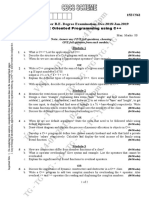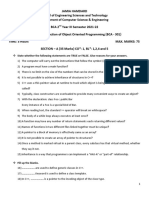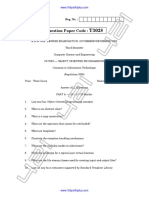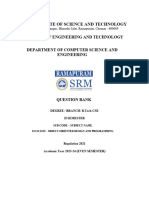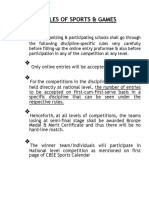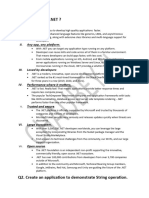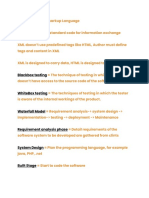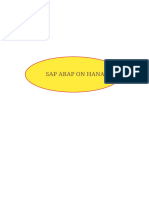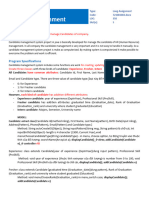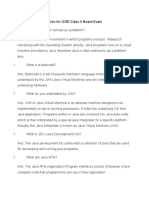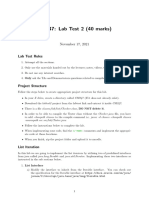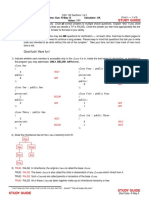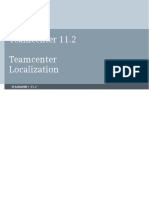0% found this document useful (0 votes)
42 views2 pagesCS102301 - Object Oriented Programming With C++
The document outlines the B.Tech. 3rd Semester Examination for the Object Oriented Programming with C++ course, detailing the structure, maximum marks, and minimum passing criteria. It includes a list of questions categorized by course outcomes, covering topics such as C++ programming structure, object-oriented concepts, pointers, memory allocation, inheritance, virtual functions, templates, exception handling, and file streams. Students are required to attempt all questions with specific marks allocated to each part.
Uploaded by
SiddharthCopyright
© © All Rights Reserved
We take content rights seriously. If you suspect this is your content, claim it here.
Available Formats
Download as PDF, TXT or read online on Scribd
0% found this document useful (0 votes)
42 views2 pagesCS102301 - Object Oriented Programming With C++
The document outlines the B.Tech. 3rd Semester Examination for the Object Oriented Programming with C++ course, detailing the structure, maximum marks, and minimum passing criteria. It includes a list of questions categorized by course outcomes, covering topics such as C++ programming structure, object-oriented concepts, pointers, memory allocation, inheritance, virtual functions, templates, exception handling, and file streams. Students are required to attempt all questions with specific marks allocated to each part.
Uploaded by
SiddharthCopyright
© © All Rights Reserved
We take content rights seriously. If you suspect this is your content, claim it here.
Available Formats
Download as PDF, TXT or read online on Scribd
/ 2










